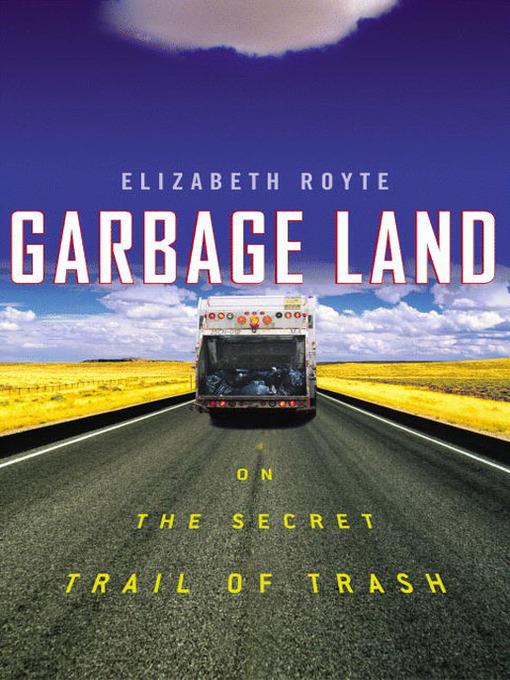
Garbage Land
On the Secret Trail of Trash
فرمت کتاب
ebook
تاریخ انتشار
2007
Lexile Score
1250
Reading Level
8-11
ATOS
9.5
Interest Level
9-12(UG)
نویسنده
Elizabeth Royteشابک
9780316030731
کتاب های مرتبط
- اطلاعات
- نقد و بررسی
- دیدگاه کاربران
نقد و بررسی

May 9, 2005
The v-p of a New York City waste transfer station recommends, "You want to solve the garbage problem? Stop eating. Stop living." Indeed, to ponder waste disposal is to confront the very limits of our society. Where does it all go? Most of us are content to shrug off the details—as long as it's out of sight (and smell). Not so journalist Royte, whose book in some ways (including its title) echoes Fast Food Nation
. That McDonald's is more immediately engaging a subject doesn't make, say, the massive, defunct Fresh Kills landfill on Staten Island, N.Y., any less compelling. Royte nicely balances autobiographical elements (where does
her Fig Newmans carton end up, anyway?), interviews and fieldwork with more technical research. Her method yields palpable benefits, not least a wealth of vivid refuse-related slang (maggots are known as disco rice). The details unavoidably venture into the nauseating on occasion, and some might find the chemistry of trichloroethane and other toxins a bit dull. As the NIMBY logic of waste disposal forces its practitioners into secrecy, Royte is obliged to engage in some entertainingly furtive skullduggery. All in all, this is a comprehensive, readable foray into a world we'd prefer not to heed—but should. Agent, Heather Shroder
.

Starred review from July 15, 2005
Royte ("The Tapir's Morning Bath") reminds us that what we dispose of is a window on our culture and consumption habits. Determined to follow the path of household trash, sewage, and recyclables, she began by visiting the New York City Department of Sanitation (she lives in Brooklyn) and accompanying sanitation workers on their routes. In the course of tracking the garbage to landfills, incinerators, and sewage and recycling facilities, she discovered that America disposes of 369 million tons of municipal waste annually -which generates over $50 billion a year in revenue. She explains the many facets of garbage disposal, what determines the location of a landfill, and the array of disposal and processing alternatives. She also raises serious questions about garbage disposal and its impact on public health. The upbeat views of garbage workers who see their roles as performing a vital service are particularly revealing. Royte's exploration of the economic, territorial, and ecological perspectives of garbage disposal adds up to a fascinating trail of trash. Recommended for all who throw things away. -Irwin Weintraub, Brooklyn Coll. Lib., NY
Copyright 2005 Library Journal, LLC Used with permission.

Starred review from June 1, 2005
A visit to the filthy Gowanus Canal near her Brooklyn home got Royte thinking about garbage. What exactly does her family throw out each day? Who carries it away, where is it taken, how is it processed? To find out, she catalogs her daily household garbage and tracks her trash to garbage transit stations, landfills, and recycling plants. Royte's nervy and unprecedented journey through the land of garbage is fascinating, appalling, and--thanks to her keen first-person journalism, commonsense skepticism, and amusing personal asides--downright entertaining. Some of her more troubling disclosures include the hazards of sewage sludge and "e-waste," that is, discarded computers, televisions, and cell phones. Smart and persistent, Royte annoys the heck out of closemouthed government officials and waste-management businesspeople and trespasses when denied access to key sites, enduring foul smells and bad vibes to glean the truth about how waste is handled, who profits from waste, what opportunities are wasted, and how waste can be reduced. What her staggering expose tells us is that as the quantity, variety, and toxicity of our garbage increases, we must, like nature, evolve ways to reclaim and reuse everything we make.(Reprinted with permission of Booklist, copyright 2005, American Library Association.)

























دیدگاه کاربران